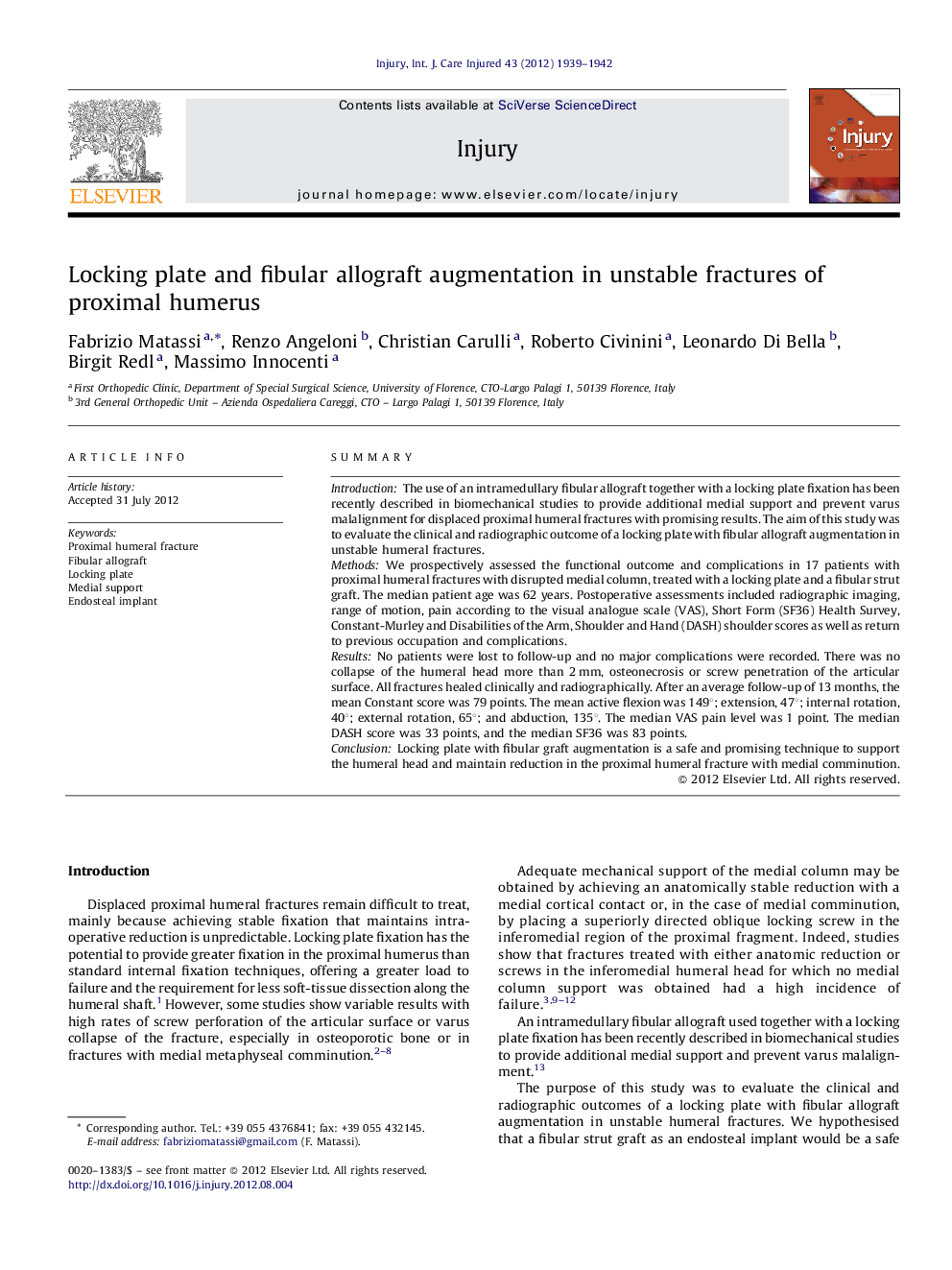| Article ID | Journal | Published Year | Pages | File Type |
|---|---|---|---|---|
| 3240803 | Injury | 2012 | 4 Pages |
SummaryIntroductionThe use of an intramedullary fibular allograft together with a locking plate fixation has been recently described in biomechanical studies to provide additional medial support and prevent varus malalignment for displaced proximal humeral fractures with promising results. The aim of this study was to evaluate the clinical and radiographic outcome of a locking plate with fibular allograft augmentation in unstable humeral fractures.MethodsWe prospectively assessed the functional outcome and complications in 17 patients with proximal humeral fractures with disrupted medial column, treated with a locking plate and a fibular strut graft. The median patient age was 62 years. Postoperative assessments included radiographic imaging, range of motion, pain according to the visual analogue scale (VAS), Short Form (SF36) Health Survey, Constant-Murley and Disabilities of the Arm, Shoulder and Hand (DASH) shoulder scores as well as return to previous occupation and complications.ResultsNo patients were lost to follow-up and no major complications were recorded. There was no collapse of the humeral head more than 2 mm, osteonecrosis or screw penetration of the articular surface. All fractures healed clinically and radiographically. After an average follow-up of 13 months, the mean Constant score was 79 points. The mean active flexion was 149°; extension, 47°; internal rotation, 40°; external rotation, 65°; and abduction, 135°. The median VAS pain level was 1 point. The median DASH score was 33 points, and the median SF36 was 83 points.ConclusionLocking plate with fibular graft augmentation is a safe and promising technique to support the humeral head and maintain reduction in the proximal humeral fracture with medial comminution.
